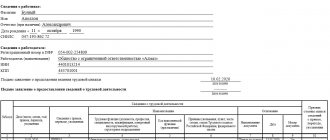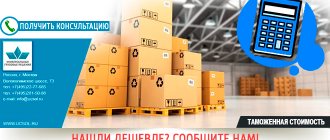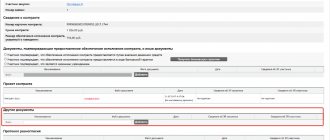Author of the article
Yuri Stanislavovich Burashnikov
Reading time: 7 minutes
AA
To move goods across the border, the customs authority must provide a cargo customs declaration. But it will not have legal force without another document - a declaration of customs value, which indicates the customs value of the cargo.
We will tell you what a declaration of customs value (DTV) is and the customs value of goods itself, how to calculate the customs value and who should do this. Let's look at the rules for filling out the DTS and the documents that need to be attached to it, as well as other nuances of completing the declaration of customs value.
What is DTS
This is a specialized type of reporting documentation, which is issued to accompany goods transported across state borders.
In fact, the DTS determines the cost value of the transported products. That is, how much the goods themselves cost and what costs the carrier had to pay to deliver the goods to the customs point. DTS information is used to calculate customs duties and duties and more. For example, in order to place valuables for temporary storage, you will have to document their value. Therefore, it is enough to provide the TDS as confirmation.
Customs value indicators are documented. Otherwise, the information has no legal force. The DTS is always submitted along with the cargo declaration and is an integral part of it. If the company does not provide a complete package of documents, the customs authority will refuse to accept the goods.
Declaration of customs value (DTV) - what is it?
Customs value means the price of purchase and delivery of products to the place of import (export) into the customs territory of the Russian Federation or from this territory. Consequently, the DTS contains information about the customs value (CV) of goods, including the method of determining the value, the conditions and circumstances of the transaction with goods relevant to determining the customs value of goods.
DTS is an integral part of the declaration of goods (DT), according to paragraph 2 of Art. 105 EAEU Labor Code “Customs Declaration”. If the cargo is declared according to a cargo customs declaration (CCD), a DTS must be prepared in the kit.
Forms DTS-1 and DTS-2
When importing goods, products and other inventory items into the territory of the EAEU, key forms are drawn up: declaration of customs value (forms DTS-1 and DTS-2). The forms and rules for their preparation are enshrined in the Decision of the Board of the Eurasian Economic Commission dated October 16, 2018 No. 160.
Forms are filled out for almost all types of goods imported into the EAEU. But there are exceptions. When declaring the customs value, the DTS is not filled out for the following categories of goods:
- if inventory items are placed under customs procedures that do not provide for the accrual and payment of duties, taxes and fees;
- if the declared values of cost indicators do not provide for the obligation to calculate and pay customs duties, taxes and duties;
- if the cost of the imported consignment does not exceed the permissible amount established by the EAEU member state (maximum 10,000 US dollars), with the exception of multiple deliveries under one contract and repeated deliveries between regular suppliers and buyers under different contracts.
Declarations are filled out in two copies. The first copy of the reporting documentation is submitted to the customs authority along with the cargo declaration. The second copy, already with a customs mark on receipt, remains with the applicant.
Who submits Form C-2 and when?
Form C-2 is submitted by all legal entities that build capital facilities that fall under the federal targeted investment program.
The form is submitted monthly on an accrual basis and at the end of the year. For a monthly report, the due date is the 3rd day of the next month, for an annual report - February 1, following the reporting year.
If the company has separate divisions, report separately for the branch and separately for the parent organization. You can submit the form in paper or electronic form.
Important! If the budget has allocated you money for the construction of housing for military personnel, information about which is classified, then report to the territorial Rosstat in compliance with the legislation on state secrets.
Declaration forms DTS-3 and DTS-4
Special forms DTS-3 and DTS-4 are issued for goods exported from the territory of the Russian Federation. The forms and procedure for filling out were approved by Order of the Federal Customs Service of the Russian Federation dated January 27, 2011 No. 152.
The forms are an integral part of the customs declaration for goods exported from the Russian Federation. But if the exported products are not subject to customs duties, taxes and duties, then it is not necessary to draw up DTS-3 and DTS-4.
Declaration reporting is generated in two copies and submitted together with the main declaration to the customs authority. One copy remains with the receiving controllers. And the second form with a mark is returned to the filler.
Calculation of customs value
Cost indicators can be calculated using several methods. Each of them is designed for specific situations.
| Method name | Calculation method | Features of application |
| Transaction price of transported products | These are the company's actual costs for purchasing products and transporting them. Additional costs are also included. For example, intellectual work or storage expenses. | The method is used only if there is documentary evidence of all included costs. For example, if some expenses cannot be confirmed by invoices or acts, then this method is not recommended. |
| Analogue transaction price | If it is impossible to actually determine the costs of transported inventory items, then this method is used. Its essence lies in the fact that for the calculation, indicators of similar supplies are taken. | An important condition is that the period for importing products cannot exceed 90 days. The lowest economic indicator is accepted for calculation. |
| Transaction price of similar goods | It is allowed to calculate the cost based on the indicators of transactions with homogeneous goods. These are those goods and materials that have similar characteristics and parameters to the transported products. | Only the lowest economic indicators for the market should be taken into account in the calculation. |
| Subtraction | The essence of the method is that additional costs are subtracted from the market value. For example, the calculation involves determining the market value of a similar or similar product, and then subtracting transportation costs, duties, commissions, and profit margins from the amount. | Market value is reduced by additional costs. |
| Addition | The calculated value is determined as the sum of the following indicators:
| Average indicators are included in the calculation. |
| Backup method | Calculated based on data from other exporters. The calculation is made based on information provided by government agencies. | It is considered the least accurate and is therefore used extremely rarely. |
Please note that the calculation methods differ not only in formulas and calculations, but also in the accompanying documentation. For example, only for the calculation method based on the transaction price of transported products, DTS-1 is issued. In all other cases, fill out DTS-2.
Indicators used for calculation
These are the values that directly affect the final result:
- market value of inventory items;
- transportation costs;
- insurance services;
- paperwork;
- additional expenses.
All types of expenses require documentary evidence and/or economic justification. Otherwise, they cannot be taken into account in the declaration of the customs value of imported goods.
In what cases is it not necessary to submit a DTS?
Additional documentation is not required in the following cases:
- transported goods are exempt from customs duties;
- a temporary declaration is drawn up on inventory items, for example, when the carrier cannot provide accurate information about the cargo being transported.
In these cases, DTS is not required. It is enough to send the main cargo declaration to the customs authority.
II. PROCEDURE FOR DECLARING THE CUSTOMS VALUE OF GOODS
II. Rules for filling out DTS-1
20. The person filling out the DTS-1 fills in the following columns of the main sheets of the DTS-1 and the corresponding columns of the additional sheets: 1, 2a, 2b, 3, 4, 5, 6, 7a, 7b, 7c, 8a, 8b, 9a, 9b , 10a, 10b, 11a, 11b, 12, 13a, 13b, 14a, 14b, 14c, 14d, 15, 16, 17, 18, 19, 20, 21, 22, 23, 24, 25.
21. The customs authority fills out the fields “For customs authority marks” on the main and additional sheets of DTS-1 in accordance with the rules for filling out the fields “For customs authority marks” (Section IV of the Procedure).
22. The procedure for filling out the columns by the person filling out the DTS-1:
Column 1.
The column indicates information about the person who sells the declared goods:
for an organization - name and location (address);
for an individual entrepreneur - last name, first name, patronymic and his place of residence (short name of the country, administrative-territorial unit, locality, street, house and apartment number).
Column 2a.
Information about the person who acts as a buyer in a foreign economic agreement, in accordance with which goods are imported into the customs territory of the Union, is indicated:
for an organization - name, its legal form and location (short name of the country, administrative-territorial unit, locality, street, house and apartment number);
for an individual entrepreneur - last name, first name, patronymic and his place of residence (short name of the country, administrative-territorial unit, locality, street, house and apartment number).
In the upper right corner of the column it is indicated:
for the Republic of Armenia - taxpayer registration number (TIN);
for the Republic of Belarus - payer registration number (UNP);
for the Republic of Kazakhstan - an identification number (IN) for an organization (branch and representative office) and an individual entrepreneur operating as a joint venture, or an individual identification number (IIN) for an individual, including an individual entrepreneur operating as a personal entrepreneurship;
for the Kyrgyz Republic - a taxpayer identification number (TIN) assigned to the recipient in accordance with the legislation of the Kyrgyz Republic, if the recipient is a legal entity or an individual registered as an individual entrepreneur in accordance with the legislation of the Kyrgyz Republic, or a personal identification number (PIN), if the recipient is an individual carrying out commercial activities on the territory of the Kyrgyz Republic and not registered as an individual entrepreneur;
for the Russian Federation - taxpayer identification number (TIN) and, through the separator “/”, the reason for registration code (KPP).
At the bottom of the column it is indicated:
for the Republic of Kazakhstan - customs identification number (CIN) of the buyer in accordance with the Classifier for the formation of customs identification number;
for the Kyrgyz Republic - code of the All-Republican Classifier of Enterprises and Organizations (OKPO) for legal entities and individual entrepreneurs;
for the Russian Federation - the main state registration number (OGRN) or the main state registration number of the record of state registration of an individual entrepreneur (OGRNIP).
Column 2b.
The column indicates information about the person who filled out the DTS-1:
for an organization - name, its legal form and location (short name of the country, administrative-territorial unit, locality, street, house and apartment number);
for an individual entrepreneur - last name, first name, patronymic and his place of residence (short name of the country, administrative-territorial unit, locality, street, house and apartment number).
In the upper right corner of the column it is indicated:
for the Republic of Armenia - taxpayer registration number (TIN);
for the Republic of Belarus - payer registration number (UNP);
for the Republic of Kazakhstan - an identification number (IN) for an organization (branch and representative office) and an individual entrepreneur operating as a joint venture, or an individual identification number (IIN) for an individual, including an individual entrepreneur operating as a personal entrepreneurship;
for the Kyrgyz Republic - a taxpayer identification number (TIN) assigned to the recipient in accordance with the legislation of the Kyrgyz Republic, if the recipient is a legal entity or an individual registered as an individual entrepreneur in accordance with the legislation of the Kyrgyz Republic, or a personal identification number (PIN), if the recipient is an individual carrying out commercial activities on the territory of the Kyrgyz Republic and not registered as an individual entrepreneur;
for the Russian Federation - taxpayer identification number (TIN) and, through the separator “/”, the reason for registration code (KPP).
At the bottom of the column it is indicated:
for the Republic of Kazakhstan - the customs identification number (CIN) of the person filling it out, in accordance with the Classifier for the formation of a customs identification number;
for the Kyrgyz Republic - code of the All-Republican Classifier of Enterprises and Organizations (OKPO) for legal entities and individual entrepreneurs;
for the Russian Federation - the main state registration number (OGRN) or the main state registration number of the record of state registration of an individual entrepreneur (OGRNIP).
Column 3.
The name of the delivery conditions (in Latin characters) is indicated in accordance with the Classifier of delivery conditions and the name of the geographical location.
Column 4.
The number and date of the invoice (invoices) issued by the seller to the buyer and containing the valuation of the goods are indicated.
Column 5.
The number and date of the contract (agreement, agreement) for the purchase and sale (supply) of goods, as well as the numbers and dates of current annexes, additions and changes to it, are indicated.
Column 6.
The details (number and date) of documents with decisions previously taken by customs authorities applicable to columns 7 - 9 are indicated.
Box 7a.
In the field provided in the column corresponding to the correct answer, an “X” is entered.
If the answer is “No”, you must proceed to filling out columns 8a and 8b (columns 7b and 7c are not filled out).
If the answer is “Yes” (if there is a relationship between the seller and the buyer of the imported goods, the criteria for which are defined in Article 3 of the Agreement), column 7b is filled in.
Box 7b.
In the field provided in the column corresponding to the correct answer, an “X” is entered. Method 1 can only be used if the answer is “No”.
Count 7c.
This column is filled in if there is a relationship between the seller and buyer of imported goods.
If the existing relationship between the seller and the buyer did not affect the value of the transaction, that is, the value of the transaction with imported goods is close to one of the verification values specified in paragraph 4 of Article 4 of the Agreement, then in the column “Additional data” the details are indicated in free form: ordinal number of the declared goods according to DTS-1 and information about the verification value used in relation to it, including full details of the source of information, as well as other relevant data.
The column is filled in by the person filling out DTS-1, at his request or at the request of the customs authority in the prescribed manner.
Box 8a.
In the field provided in the column corresponding to the correct answer, an “X” is entered. Method 1 can only be used if the answer is “No”.
Box 8b.
In the field provided in the column corresponding to the correct answer, an “X” is entered.
If the sale of goods or their price depends on compliance with conditions or obligations, the impact of which on the cost of goods can be quantified, the type and content of such conditions or obligations are indicated (for example, the presence of a requirement for counter-delivery of goods by the buyer or the provision of any services to the seller that affected for the cost of this transaction, etc.), as well as calculation of the valuation of these conditions or obligations, indicating the documents on the basis of which such calculation is made. The corresponding amount is given in column 11b as an indirect payment.
If the impact on the transaction value of the relevant terms or obligations cannot be quantified and properly demonstrated (including after the goods have been released), Method 1 cannot be applied.
Box 9a.
In the field provided in the column corresponding to the correct answer, an “X” is entered.
If the answer is “Yes”, after column 9b, the conditions relating to license and other similar payments for the use of intellectual property objects (for example, the type of payment, the basis for its work, etc.) are indicated, which the buyer directly or indirectly paid or must pay to the seller as terms of sale of goods. The amount of these payments is given in column 15.
Box 9b.
In the field provided in the column corresponding to the correct answer, an “X” is entered.
If the answer is “Yes,” a condition is indicated after this column under which a portion of the income or proceeds from the subsequent sale, other disposition or use of the goods by the buyer is due directly or indirectly to the seller.
The corresponding value is given in column 16.
Box 10a.
The number of additional sheets for DTS-1 is indicated (the number of sheets must correspond to the number of the last sheet, reduced by 2).
Box 10b.
The date of filling out the DTS-1, last name, first name, patronymic, type, number and date of issue of the document proving his identity, contact telephone number, as well as the position of this person in the declarant’s staff, if the DTS-1 is filled out by a legal entity, or in the state are indicated customs representative and his signature is affixed. The DTS-1 certificate is issued in this column in the manner established by paragraph 18 of the Procedure.
In cases where DTS-1 is drawn up by the customs authority, this column indicates the date of compilation of DTS-1, last name, first name, patronymic, position of the authorized official of the customs authority, an imprint of the personal numbered seal of this person and his signature.
The second sheet of the DTS-1 form.
The sheet can contain data on goods declared in one declaration of goods - from one to three names of goods.
Column "Product N".
The product number from the corresponding column of the goods declaration is indicated.
When declaring goods of different names contained in one consignment indicating one classification code according to the unified Commodity Nomenclature of Foreign Economic Activity of the Eurasian Economic Union (hereinafter referred to as the EAEU TN FEA), when it is necessary to indicate information for each or some goods from the list, the corresponding serial number of the goods is indicated according to list.
Column “EAEU Commodity Nomenclature for Foreign Economic Activity Code”.
The product code according to the Commodity Nomenclature of Foreign Economic Activity of the EAEU is indicated.
Section A “Basis for calculation”.
Box 11a.
The first line indicates in the invoice currency the price actually paid or payable for the goods when they are sold for export to the customs territory of the Union.
The second line indicates in the currency of the Union member state to whose customs authority the customs declaration of goods is carried out, the price actually paid or payable.
The account currency code and the corresponding exchange rate of the account currency to the currency of the Union member state on the day of registration of the goods declaration are given in parentheses.
Box 11b.
The amount of indirect payments is indicated in the currency of the Union member state (in correspondence with column 8b).
This column reflects the amount of adjustment to the price, confirmed by the declarant’s documents and relevant calculations, for cases where there were corresponding conditions or obligations (given in column 8b).
If the total amount of indirect payments (adjustments to the price) is indicated in column 11b, then the decoding of the total amount indicated in column 11b is made in the “Additional data” column of the corresponding sheet of DTS-1 or on separate sheets of A4 format in the order established by paragraph 16 of the Procedure.
If indirect payments (price adjustments) apply to all or several of the supplied items of goods, then the distribution of the total amount of indirect payments between the items of goods is made in proportion to the cost of each item of goods indicated in column 11a.
Column 12.
The sum of the values given in columns 11a and 11b is indicated in the currency of the Union member state.
Section B “Additional charges: expenses in national currency that are not included in A.”
This section provides in the currency of a member state of the Union additional charges that, in accordance with Article 5 of the Agreement, are added to the price actually paid or payable for imported goods.
If such values are indicated in invoices or other commercial documents in foreign currency, then in column “*” of DTS-1 the data for the recalculation of these values are provided, indicating the product number and position (the number of the column of DTS-1 to which such information relates), a three-digit alphabetic currency code in accordance with the Currency Classifier, the amount of expenses in foreign currency and the currency conversion rate on the day of registration of the goods declaration.
Box 13.
The buyer's expenses are indicated that were not included in the price actually paid or payable specified in column 11a, that is, not included by the seller in the invoice issued to the buyer, but which occurred in connection with the importation of the goods being valued into the customs territory of the Union and paid by the buyer ( or payable).
Box 13a.
The buyer's expenses for the payment of remunerations to the intermediary (agent), broker are indicated, with the exception of procurement fees paid by the buyer to his intermediary (agent) for the provision of services for his representation abroad related to the purchase of the goods being valued (imported).
If the DTS-1 form is filled out for goods of several names contained in one shipment, then the specified costs are distributed between each name of goods in proportion to the values indicated, respectively, in column 12.
Box 13b.
The buyer's expenses for containers and packaging are indicated, including the cost of packaging materials and packaging work, if such containers and (or) packaging in accordance with the EAEU Commodity Classification for Foreign Economic Activity are considered as a single whole with the goods being valued.
The costs of packaging do not include separately paid amounts for returning the packaging to the seller.
Box 14.
The appropriately distributed cost of goods and services directly or indirectly provided by the buyer free of charge or at a reduced price for use in connection with the production and sale for the export of the valued (imported) goods into the customs territory of the Union is indicated, in an amount not included in the price actually paid or payable.
For goods (services) provided by the buyer free of charge, their full purchase price is indicated if the importer purchased such goods (services) from a seller who is not a related party. In the absence of such information and (or) their sufficient documentary evidence, the cost determined on the basis of relevant information about identical, homogeneous goods (services) or goods (services) of the same class or type is indicated. If such goods (services) are produced (performed) by the buyer, production costs confirmed by the buyer’s accounting documentation are indicated.
For goods (services) provided by the buyer at reduced prices, the cost of goods and services minus the amount paid by the seller is indicated.
If the buyer provided the seller with any services for processing or processing raw materials and components, their delivery, storage, etc., then the cost of these services (when calculating the customs value) is taken into account at the price at which they were produced or purchased by the buyer.
Box 14a.
The appropriately distributed cost of raw materials, materials, parts, semi-finished products and similar items that make up the imported goods is indicated.
Box 14b.
The appropriately distributed amount of expenses for the acquisition of tools, dies, molds and other similar items used in the production of imported goods is indicated if the buyer purchased these items from a seller who is not a related person with the buyer, or the costs of their production if the items were produced by the buyer or a person who is related to the buyer.
The distribution of the value of the specified items used in the production of the goods being valued can be carried out by attributing this entire value to the customs value of the first batch of goods or to the customs value of another quantity of goods determined by the declarant, which cannot be less than the number of goods being declared. Such allocation must be made in a manner appropriate to the particular circumstances, depending on the documents available to the declarant and in accordance with generally accepted accounting principles.
If these items were previously used by the buyer, regardless of whether they were purchased or produced by that buyer, the original purchase or production price shall be reduced in order to obtain (determine) the value of these items taking into account their use.
Count 14th century.
The appropriately distributed cost of materials consumed in the production of imported goods is indicated (for example, the consumption of fuels and lubricants).
Count 14g.
The appropriately distributed cost of design, development, engineering, design work, decoration, design, sketches and drawings made outside the customs territory of the Union and necessary for the production of imported goods is indicated.
In relation to such goods and services (works) provided by the buyer, if they were purchased or leased by the buyer, the costs of their acquisition or lease are taken into account.
In relation to goods provided by the buyer that are in public ownership, that is, state or municipal property, the costs of obtaining copies from them are taken into account.
Box 15.
License and other similar payments for the use of intellectual property are indicated (in conjunction with column 9a).
License and other similar payments for the use of intellectual property are taken into account, which the buyer must pay either directly to the seller or to a third party.
In the event that license and other similar payments for the use of intellectual property relate to all or several of the supplied items of goods and the agreement on granting rights to use intellectual property does not provide for the distribution of payments for such use between individual items of goods (for example, a lump sum payment ), then the distribution of the total amount of payments for the use of intellectual property between names of goods is made in proportion to the value of each name of goods indicated in column 12, except for cases where, at the request of the declarant, the total amount of such payments is included in the customs value of goods with the highest level of taxation. At the request of the declarant, the total amount of payments for the use of intellectual property may be attributed to the first batch of goods in respect of which such payments are provided.
When determining the customs value of imported goods, the following should not be added to the price actually paid or payable:
a) payments for the right to reproduce (replicate) imported goods in the customs territory of the Union;
b) payments for the right to distribute or resell imported goods, unless such payments are a condition for the sale of imported goods for export to the customs territory of the Union.
Box 16.
This column takes into account the part of the income (revenue) received as a result of subsequent sale, disposal in another way or use of imported goods, which is directly or indirectly due to the seller (in conjunction with column 9b).
Column 17.
The amount of costs for transportation (transportation) of the goods being valued to the airport, port or other place of their arrival in the customs territory of the Union is indicated, if, in accordance with the delivery conditions established by the foreign trade agreement, transportation (transportation) of the goods to the place of arrival in the customs territory of the Union is not included in the price, actually paid or payable. If transportation (transportation) is carried out by various modes of transport (multimodal transportation), then the total costs of transportation (transportation) by all modes of transport are taken into account, based on the tariffs in force at the time of transportation (transportation) of goods.
If transportation (transportation) was carried out free of charge or using the buyer’s own vehicles, this column provides the value calculated on the basis of transportation tariffs by the relevant mode of transport in force during the period of transportation (transportation) of goods or in the corresponding period of time (seasonality of transportation).
If the declarant does not have data on tariffs for transportation by this type of transport, then to calculate transport costs, accounting data for calculating transport costs including all necessary items or cost elements is used.
If DTS-1 is filled out for goods of several types, then the costs of transportation (transportation) of goods are distributed between goods of different types in proportion to their gross weight.
Column 17 indicates the place (geographical point) of arrival of goods into the customs territory of the Union or the destination of goods in the customs territory of the Union, costs to which, in accordance with the terms of delivery, are paid by the buyer separately and must be included in the customs value.
If the costs incurred by the buyer for transportation (transportation) from the place of arrival in the customs territory of the Union to the destination in the customs territory of the Union cannot be documented, then column 17 indicates the destination in the customs territory of the Union. If the division of costs for transportation (transportation) from the place of departure to the place of arrival in the customs territory of the Union and from the place of arrival to the place of destination can be documented, then column 17 indicates the place of arrival of the goods in the customs territory of the Union.
Column 17 also indicates the costs incurred by the buyer for customs clearance of goods when exported from the country of export (if any), as well as the freight forwarder’s remuneration.
Column 18.
The costs of loading, unloading or transhipment of the goods being valued and carrying out other operations related to their transportation (transportation) carried out to the place of arrival of these goods in the customs territory of the Union are indicated.
If DTS-1 is filled out for goods of several types, such expenses are distributed among the corresponding goods in proportion to their gross weight.
Column 19.
Insurance costs in connection with the operations specified in subparagraphs 4 and 5 of paragraph 1 of Article 5 of the Agreement are indicated.
If the DTS-1 form is filled out for goods of several types, then insurance costs are distributed among the corresponding goods in proportion to their value indicated in column 12.
Column 20.
The sum of the values given in section B is indicated.
Section B “Deductions: expenses in national currency that are included in A.”
This section indicates in the currency of a member state of the Union the amounts of expenses included in section A, but which, in accordance with paragraph 2 of Article 5 of the Agreement, are not included in the customs value of the declared goods, provided that such expenses are separated from the price actually paid or payable , declared by the person who filled out the DTS-1 and documented by him.
If such expenses are indicated in invoices or other commercial documents in foreign currency, then in column “*” of DTS-1 the conversion data is provided indicating the product number and position (the number of the column DTS-1 to which such information relates), a three-digit alphabetic currency code in accordance with the currency classifier, the amount of expenses in foreign currency and the currency conversion rate on the day of registration of the goods declaration.
Column 21.
The amount of expenses incurred after the arrival of goods into the customs territory of the Union is indicated for the construction, construction, assembly, installation, maintenance or provision of technical assistance (including training) in relation to such assessed (imported) goods as industrial installations, machinery or equipment in that case , if the contract provides for these works and such costs are separated from the price actually paid or payable in the contract and/or in the seller's invoice.
Column 22.
The amount of costs for transportation (transportation) of the goods being valued from the place of their arrival in the customs territory of the Union to the place of destination is indicated, if they are separated from the price actually paid or payable in the contract and/or in the seller’s invoice.
Column 23.
The amounts of duties, taxes and fees paid in the customs territory of the Union in connection with the import or sale of the valued (imported) goods are indicated.
Column 24.
The sum of the values given in section B is indicated.
Box 25a.
The customs value of the goods being valued is indicated in the currency of the Union member state, calculated by adding the values given in columns 12 and 20 and subtracting from this amount the value given in column 24.
Box 25b.
The customs value given in column 25a is indicated, converted into US dollars at the appropriate exchange rate on the day of registration of the declaration for goods by the customs authority.
Column *.
If one or more components of the customs value (to be indicated in columns 13 - 23) are indicated in invoices or other commercial documents in foreign currency, this column provides the conversion data indicating the number of the goods and position (the number of the DTS-1 column to which includes such information), a three-digit alphabetic currency code in accordance with the currency classifier, the amount of expenses in foreign currency and the corresponding conversion rate (clause 15 of the Procedure).
Column "Additional data".
If necessary, any additional data (calculations) related to the information provided in DTS-1 are indicated.
Column "Signature, seal".
The sheet is signed by the person who filled out the DTS-1 and certified in the manner established by clause 18 of the Procedure.
Filling out the declaration
All TTS forms consist of two pages, each of which discloses information about transportation. The first page of the document contains information about the transported goods. The name, quantity, customs value, characteristics and other characteristics of the cargo are indicated here. Any inaccuracy or error may lead to problems and disputes with customs inspectors.
The second sheet of the DTS is a detailed calculation of the cost and information about the method of its calculation.
Be prepared that customs officers have the right to request supporting documentation. Papers are required to confirm calculations and transportation information. The main requirements for filling out a declaration of customs value are documentary evidence. If justifications are not submitted to customs officers for consideration, then controllers have the right to refuse to transport cargo across the border.
What documents will be required:
- supply contracts;
- invoices;
- invoices;
- payment orders, receipts and checks;
- licenses and certificates;
- technical passports for goods;
- specifications and so on.
Adjustment of customs value
Errors and omissions when preparing declaration documentation are not uncommon. If customs officers refused to accept the cargo, pointing out an inaccuracy in registration, the errors should be corrected. In this case, declaration and adjustment of customs value are carried out according to the standard. Corrections are made to the documentation to reflect the actual values and characteristics of the shipment.
Moreover, not only the declarant, but also his official representative has the right to make adjustments. Also, customs inspectors can independently correct documents. Then the declarant does not need to fill out additional paperwork.







